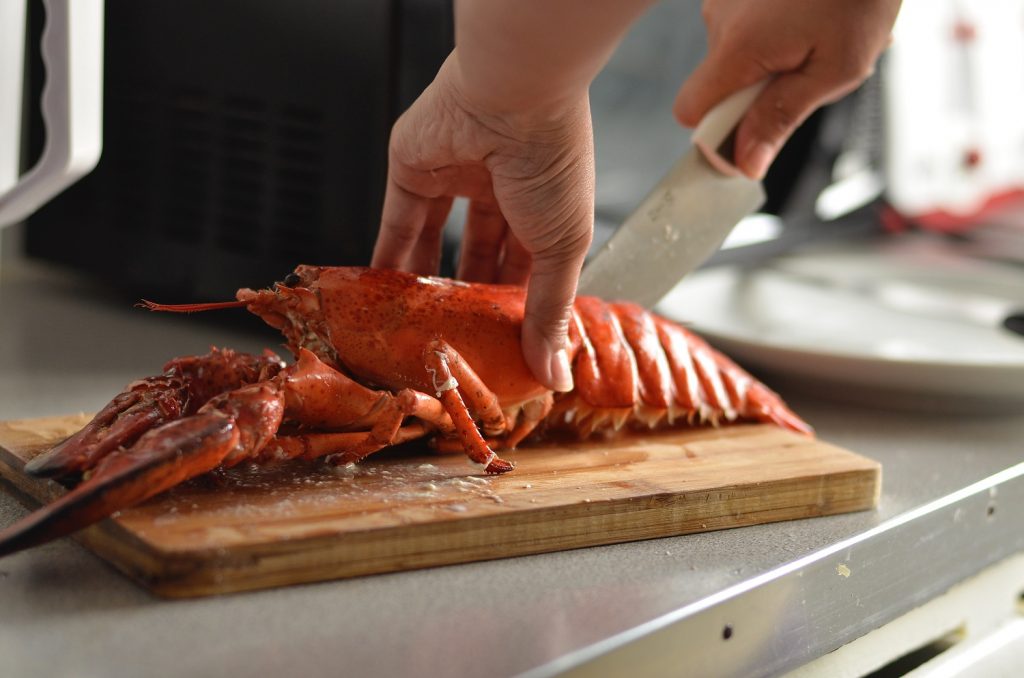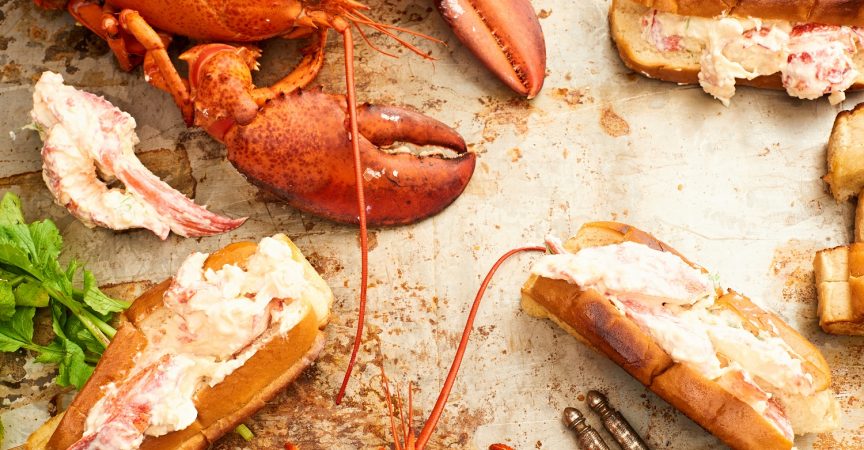Revitalizing Your Restaurant For 2020 & Beyond: Lessons I learned from a lobster
Image by PEI Lobster and Chef Charlotte Langley
In this age of COVID, all I want to do is pour any extra revenue I can find into the industry that I love and cherish deeply. It was with genuine gratitude that I recently accepted an amazing opportunity to engage not only in Ontario culinary tourism but in Canadian culinary tourism.
Culinary tourism, or food tourism, has been trending for a while, now. But, with most of us on lockdown at home or limited to our home province and unable to travel, a taste of somewhere else is suddenly extra appealing. Expect a huge surge in this area for the rest of 2020 and into next year.
I’m originally from Prince Edward Island. One of the foods we’re most famous for is lobster. As a chef, Atlantic lobster has been a “hey how are ya” for such a long time in my life and career that I probably have not given it the respect it deserves. By that I mean, I have worked in the seafood industry for years, and in that entire time, lobster was always a high-ticket item that I didn’t always gravitate towards.
It’s also easy to forget that even though it’s on the menu in almost every joint in the Maritimes, lobster is a rare treat in many parts of Canada. The same goes for any local specialty outside its usual market.
Never Underestimate the Value of a Partnership
So, when Lobster PEI gave me some time to re-engage with this ingredient around which I have so many memories, I took it with gusto. This summer, I was privileged to be asked to assist with a culinary tourism project in the Toronto area. Lobster PEI partnered with nine restaurants in the GTA and vicinity to launch the PEI Lobster Roll Call. Each restaurant was challenged to craft their best roll using PEI lobster. Seafood fans were encouraged to experience the authentic taste of real Atlantic lobster and then vote for their favourites.
Customers got a mental vacation to the Maritimes, and participating restaurants enjoyed a surge in sales. One owner reported a 496% increase in lobster roll sales in the first nine days of the contest versus 2019. I’d call that a win-win, and proof that the right partnerships can make a tangible difference.
People love to eat, drink, celebrate and share
moments through these mediums and moments. Personally, I want to see you
celebrate what you have in your local community or region, and bike, walk, or
ride to a location that inspires you. Get out there and taste local from your
neighbours and share your experiences with friends, loved ones, and customers.
And, find industry partners who can help you turn your ideas and their products
or produce into exciting new menu items.

See the Value in Food, Not Just the Price
The more I looked, tasted, touched, and felt the lobster, the more I realized it’s not expensive at all. It’s VALUABLE. And that is an essential distinction for a restaurateur trying to stay afloat right now.
Rich proteins and other ingredients we often overlook based on availability and cost, add value to our menus. That value takes two forms: monetary value, and perceived value, and they’re inextricably connected.
I encourage restaurant owners and business operators to re-evaluate how they approach seafood and other premium inputs. Technique, finesse, and attention to detail bring the customer value to its peak. When it comes to dining in or taking out, it’s all about the perceived value and what the customer is willing to pay for that value. As a chef, I feel it’s my responsibility to look at the whole plate when designing a dish or recipe and come at it with the attitude of how can I make this the best, most delicious, health-filled, and mindful dish while ensuring the client is satisfied?
You may be asking yourself (or your laptop monitor), “where do I start???” I like to start with what is available to me, and what’s in season right now that I can access readily. I ask myself a few questions, such as how local is it? How many steps did it take to get to me? Is there an option to source it directly and create new partnerships and friendships with the fisherperson or farmer?
Next, I’ll cook and prepare the ingredient and get to know its texture and taste, and determine how much I actually want or need at that moment. This helps me direct my mind to the cost associated and set a budget for each dish, staying mindful of the slim margins that have always, unfortunately, existed in the food and hospitality industry.
Using lobster as an example, let’s look at how
to squeeze all the value you can out of a high-cost ingredient. The meat of a
one-pounder can be utilized for at least two dishes. You can then use a sauce
made with the shells to finish or incorporate into several more dishes to give
that lobster-flavour impact without using the meat. Think whisked into eggs for
an omelette or drizzled over a corn and clam chowder. This spreads the cost
out, and everyone gets a taste. Think about it, and you’ll realize this same
strategy may be applied to other inputs your current cost analysis system
causes you to reject.

Surf the Food Trend Waves to Tempt Diners
Food trends are power motivators for restaurant-goers. From foodie bloggers and influencers to the most casual diners, people love to indulge in the latest and greatest trends. Sometimes it’s about the look of the moment – remember squid ink everything? But, sometimes, it’s all about the feel. If you can make a diner feel good about their decision to eat with you, you’re going to win hearts.
Let’s look at sustainability, a hot-button topic that just keeps growing in importance. The term “sustainability” translates to a renewable resource that we can use to nourish and feed our customers and grow our businesses and our industry. How can we in the foodservice sector (and as general consumers) support sustainable fishers and farmers?
Here are a few things to keep in mind:
- Look for eco-labels to guide you to the best options for sustainable, traceable and renewable sources, such as Certified Naturally Grown and MSC Certified Sustainable Seafood.
- Consume smaller portions and create joy around that.
- Learn about how the products you use are harvested, cared for, and, most importantly, their seasonality. A season is a season for a reason, to coin a phrase.
- Talk to who you are buying seafood, meat, and produce from, and you’ll discover how best to source your ingredients.
On the subject of direct sourcing, with all the unique challenges we’re facing these days, food security is at the top of my list of concerns. The general consumer is used to going to the grocery store, market, food hall, etc., and this has to shift. By working directly with the fisherpeople and fisheries, farmers, and artisans, we support the backbone of how our entire nation eats. Get to know a farmer today, and I guarantee it will enrich your life and change how you put food on the table.
I talked about culinary tourism earlier. It’s always been popular, but a pent up desire to travel is really heightening the demand for authentic food experiences from all those places we can’t get to right now. With Canada being so vast and varied, you can offer culinary tourism dishes with local produce and ingredients and whisk people’s imaginations off to the far corners of the country. This nation has so many beautiful cultural influences that I don’t know how you could not possibly discover 100 ways to make a peach pie, or a lobster roll, for that matter, within moments of stepping outside of your door.
Some Free Advice From A Chef
The future of food and hospitality looks very different from what I have experienced my entire career. I’ll leave you with these top trends, if that’s what you’d like to call them. Me, I would call them “how to survive in our new future.”
- Shop as locally as possible. Read labels and talk to producers; they have a product to share with you, and now is the time to look for it.
- Preserve what you bring home. Experiment in the kitchen, write it down, and share what you’ve learned. (Give me a call, and we can chat recipes and tips!)
- Get outside! Patio season may be slowly closing, but why not bundle up and travel to sample the fabulous warm cider and beignets at the local orchard? “Fresh & Local” doesn’t start and stop with the summer weather.
- Be a multi-business operator. You are no longer “just” a restaurant. You are a grocer, a bakery, a retail outlet, a recycling hub, a bike repair shop, and you make donuts on the weekend and serve the best Caesars to-go. Break out of your mould and diversify – you won’t know what you can do until you do it.
To sum it all up, patience and honesty in our relationships with our neighbours and partners will help us not only survive, but thrive.
By the way, I came up with a new dish as a
result of my involvement with the PEI Lobster Roll Call promo: Lobster
Pappardelle with Charred Corn and a Smoked Lobster Cream – with fresh herbs of
course. Inspiration is out there. Keep an eye out and make sure you grab it
when it comes your way.









